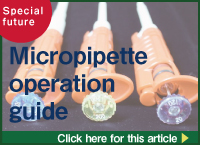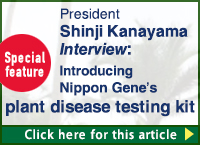Rice
Koshihikari rice is familiar to Japanese people. Koshihikari is also used in Japanese restaurants. It is a brand that represents delicious rice.
For the discrimination of rice varieties, it is necessary to acquire specialized knowledge and technology. In recent years, counterfeiting of food, such as selling cheap rice as brand rice, has become a problem, and there is a method of using a genetic test kit to confirm this.
Our method is designed not only to make it easy to judge whether raw rice and cooked rice is Koshihikari or not, but also to judge whether other varieties are mixed.
Rice Variety Discrimination Kit (Koshihikari)
- A series of operations, from DNA extraction to detection, is possible
- It can be inspected with either raw rice or cooked rice
- Can be identified visually by the presence or absence of fluorescent color
The Koshihikari LAMP discrimination kit uses the LAMP method to detect Koshihikari species through two amplification tests, and confirms that the raw rice or cooked rice is Koshihikari.
Pi5-1 gene is considered to be the same gene as the rice blast resistance gene Pii possessed by the top production varieties excluding Koshihikari. In this kit, the presence or absence of amplification in the region corresponding to the first intron of the resistance gene Pi5-1 is confirmed for discrimination.
This kit determines the result of each sample based on the two reactions Koshihikari discrimination test ① and ②. If Koshihikari exists in the sample, it will be judged as positive in the Koshihikari discrimination test ① of this kit. On the other hand, if there are varieties other than Koshihikari in the sample, it will be judged positive by the Koshihikari discrimination test ②. The final judgment is made using both the results of the Koshihikari discrimination test ① and ②. If the sample consists only of Koshihikari, only Koshihikari discrimination test ① is positive. When other varieties are mixed in Koshihikari, both Koshihikari discrimination tests ① and ② are positive. If it is composed only of varieties other than Koshihikari, only Koshihikari discrimination test ② results are positive.
The operation required for the test is to use the 20 × extraction buffer (1) and (2) included in the kit to extract the rice genomic DNA from the raw rice or cooked rice. In addition to this, DNA is mixed with the testing mix (mixture of Koshihikari discrimination test solution (1) or (2), enzyme, and fluorescent dye) and simply kept at 63˚C for 40 minutes.
Judgment of the result is based on the visual judgment method that confirms the presence or absence of coloration of the fluorescent color developing solution, and since the DNA amplification reaction to detection are performed in a completely closed reaction tube, so confirmation can be safely performed in a short time.
Detection Kit
Rice Variety Discrimination Kit (Koshihikari)
A diagnostic kit that distinguishes Koshihikari and varieties other than Koshihikari.
* The linked page may be in Japanese, please use the translation function of the browser.




